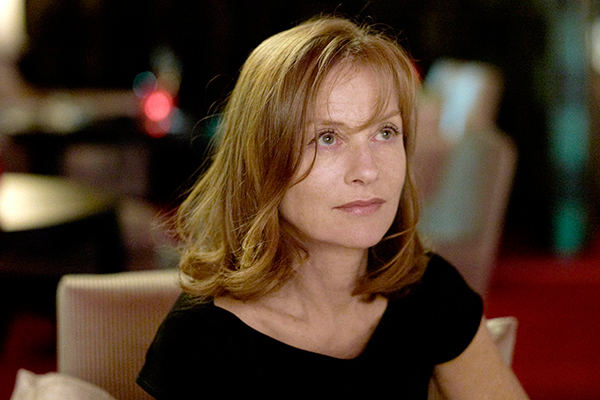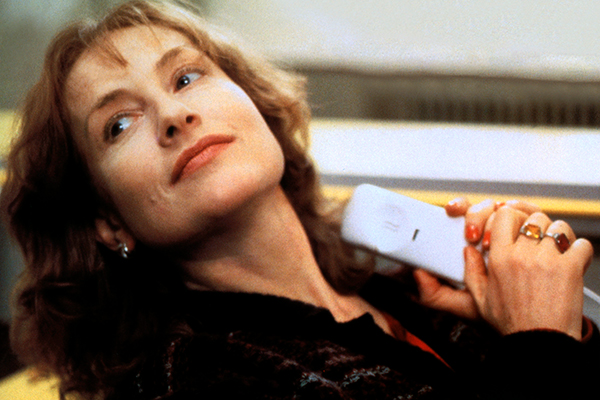Isabelle Huppert, Claude Chabrol,
féminin-masculin
PostED ON 17.10.2024
Isabelle Huppert and Claude Chabrol formed a renowned artistic alliance, yet their kinship depended on a beautiful profound secret: the ‘less is (so much) more’ approach. Huppert was the vehicle by which Chabrol explored the female condition as never before. Together they made seven films, including a pair of comedies between 1978 and 2006.

Special Treatment by Jeanne Labrune (2010)
© Patrick Muller - Liaison Cinématographique - Samsa Films - Artemis Production / DR
What unites us ?”, asks Claude Chabrol (just for the sake of clarity). First of all, we have the same sense of humour; “Isabelle is a hoot”! Then there's her speed- she's quick, she understands everything in a flash... Our relationship was immediately akin to that of uncle and niece. I use the informal form of address (‘tu’), and she uses the formal form (‘vous’), which is her way of showing her respect for me in front of others. From the very first shots of Violette, I knew that our collaboration would be an enjoyable one.”
The filmmaker has made the most of the unbridled, extroverted side of the actress, who incarnates an unrelenting con artist in The Swindle, or a hard-hitting judge in Comedy of Power. However, it is at the heart of the drama where the Huppert-Chabrol intelligent kinship comes into its own. No one knows how to film Isabelle's silent face better than Claude Chabrol, in the enigmatic expressions of young girls (Violette, Story of Women) or female protagonists (Nightcap, Madame Bovary), who are pushed to their outermost boundaries. Thanks to the actress's face, which is (ironically) so transparent as to appear unfathomable, Chabrol develops a concept he holds dear, inherited from Fritz Lang and Georges Simenon: sooner or later, wounded beings will fight back. Of course, there are no rules, no explanations, no psychology nor judgment.

La Cérémonie de Claude Chabrol (1995) © MK2 - Olga Film - Prokino / DR
Isabelle Huppert is such a consummate actress that she embraces this Chabrolian adage to the fullest, transforming herself from an abortionist of poor social rank in Vichy France, to a murderous willow lost in the Swiss chocolate bourgeoisie, or a provincial wife dreaming of a lofty destiny. None of these characters, having known nothing but harshness and indeed rejection, seek compassion, let alone pity, and the actress's face hardly bears a trace of smiles or tears. Chabrol sharpens his focus, getting close enough to her face so that we imperceptibly detect only the trembling of the edges of the lips or a welling up of tears that refuse to burst forth. These restrained emotions, combined with dialogue about a society that condemns deceitful women, make for enthralling cinema. With Chabrol, Huppert is not looking for sympathy anyway, but for nuance, for the ambivalence in all of us, the kind that no one generally wants to admit to themselves, which is nevertheless truly moving and poignant, because it shows us bereft, and naked. Chabrol even embarks his favourite actress on one of his most daring and feverish works, La Cérémonie. Far removed from anything they had done together, this picture offered Huppert a role that could not be turned down, that of a terrible, trivial, abominable woman, all immoral ferocity and sordid envy, full of obliviousness, tinged with pettiness. It constitutes perhaps the most ‘lurid’ character, in the noble sense of the term, in the actress's canon, and obviously one of the most essential, because being an actress means embodying everything, truly, without any bias. In this respect, Claude knew he could count on Isabelle. They probably didn't even need to voice it. The filmmaker added: “I think Isabelle has created her own œuvre over the course of her films, which is very rare among actors. I often say that she reminds me of Raimu. It's not a meaningless statement. Raimu created a body of work out of his various roles. Isabelle's case is even stronger, because her roles are so varied and she has created a very comprehensive vision of women”.
Virginie Apiou
Master class
A conversation with Isabelle Huppert
Les Célestins, Théâtre de Lyon
Friday, 18 October at 3.00 pm
Presentation ceremony of the Lumière Award to Isabelle Huppert
Amphithéâtre – Centre de Congrès
Friday, 18 October at 7.30 pm
Screenings:
Violette by Claude Chabrol (Violette Nozière, 1978, 2h04, Prohib. ages -12)
Sainte-Foy-lès-Lyon Thu 17 8pm | Institut Lumière (Villa) Sat 19 10:45am | Institut Lumière (Villa) Sat 19 11am | Pathé Bellecour Sun 20 5pm

